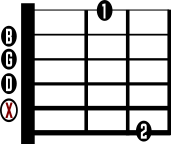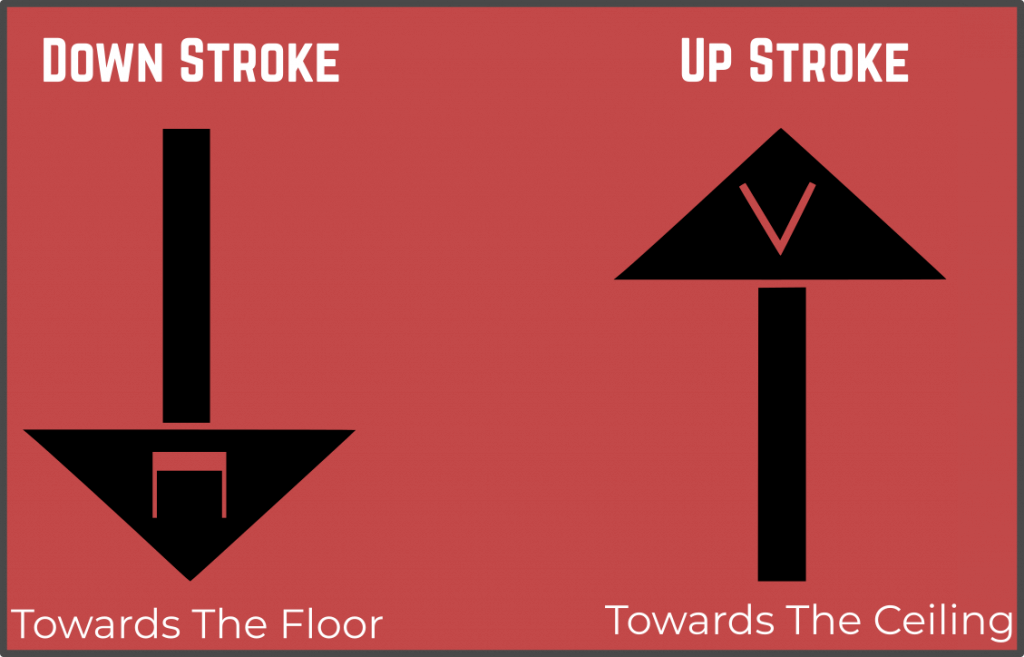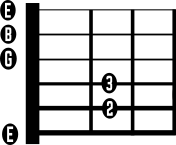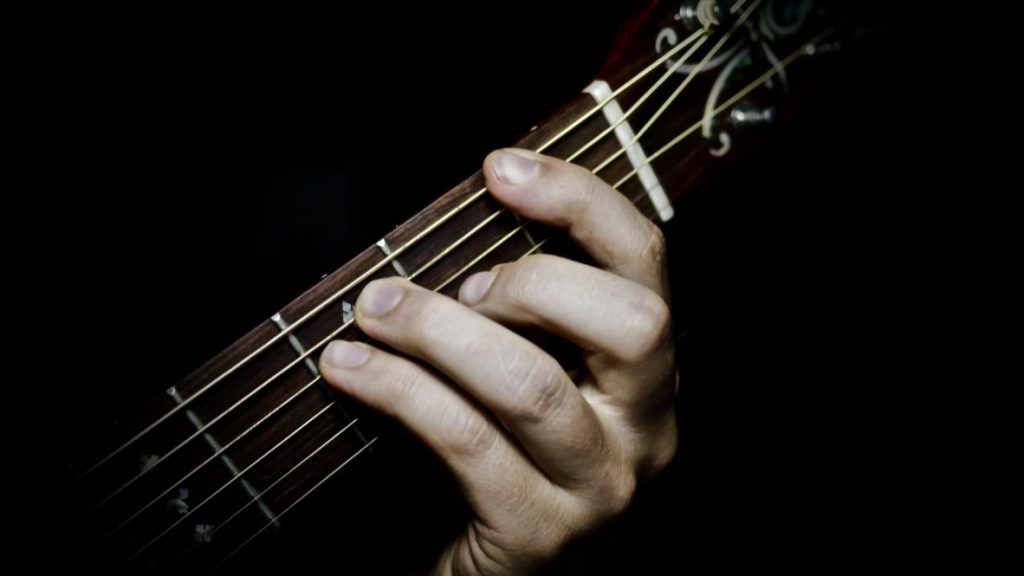Hey friend, if you are new to the guitar and you wanna start playing guitar chords, then you will find this guide here extremely helpful!
Here I cover the most important topics a guitarist, who wanna start playing chords, need to know in the beginning to make good progress.
Feel free to use this post here as a practical guide and read it to get a big picture overview of what the details of playing chords on the guitar are. Some topics will probably be a little challenging and might overwhelm you. But don’t worry, that’s ok!
The goal here is to be practical and get you as quickly as possible to grab your guitar and start playing chords.
Now, take a look at the table of contents and see where you wanna start.
In this sense, enjoy and be your own teacher

Table of Contents
Can I teach myself playing guitar chords?
Yes, absolutely. Just make sure you have a properly tuned guitar, so you can judge your efforts when practicing.
Be patience with yourself and don’t expect results too quickly, although playing guitar chords is not that hard, especially when you start with the easiest guitar chords of all time.
If you need some guidance to tune your guitar, then check out this guide on how to tune your guitar with a tuner.
How to read a chord diagram?
Chord diagrams are visual representations of your guitar fretboard.
The horizontal lines represent the strings and the vertical lines represent the frets. The thickest line on the bottom is the low e string and the thinnest line on top is the high e string.
The dots tell you where you need to fret the note. The numbers stand for the fingers of the gripping hand. 1=Index, 2=Middle, 3= Ring, 4=Pinky
The X stands for muting or not playing a string. Open strings are represented on the left outside the fretboard

If you wanna read a more comprehensive guide on how to read a chord diagram, then read this guide here.
Which guitar chords should I learn first?
If you are a complete guitar beginner and you know absolute nothing and can’t play anything on the guitar, then start with the easiest guitar chords of all time.
These are chords where you just need to fret one or two notes with your gripping hand. They are even easier to beginn with than the typical basic guitar chords like C or Am, where you need to fret 3 notes.
Start there and enjoy yourself playing guitar.
Their chord names are Em, Em7, E7, Asus2, Dsus2, Badd11.
If you wanna learn the basic chords, which are still very beginner friendly and easy, but will challenge you, then I recommend you check out my beginner guide for easy guitar chords.
How many chords should a guitar beginner know?
Not many! To play really good guitar music you can play along with some big names with only two chords.
There are many songs that are played with two chords only, like
Born In The USA by Bruce Springsteen (B-Chord & E-Chord)
Lively Up Yourself by Bob Marley (D Chord & G Chord)
Paperback Writer by The Beatles (C Chord & Em Chord)
Eleanor Rigby by The Beatles (C Chord & Em Chord)
Break On Through by The Doors (D Chord & Em Chord)
But in general, most songs are played with 4 chords. Which is obviously not that much either.
I hope this is encouraging, because you don’t need to know much to start playing guitar.
Choose a two chord song and learn two chords (pick the shapes that are the easiest for you) and start making music.
What are the basic guitar chords?
Basic guitar chords are usually easy and simple beginner chords. A good start a is to learn the 5 following chords: C A G E D.
This is the foundation for the so called CAGED-System, which will help you to visualize the entire fretboard.
Learning these 5 basic chord shapes first is a good starting point.
How to practice chords properly?
If you struggle to play chords on the guitar, then you are not alone! Be patience and give yourself time.
The most effective strategy for practicing chords is this: Practice consistently and regularly. There is no trick to it. If you commit to work on a specific chord for some days or weeks, then you will succeed. Here are some tips for how you can structure your practice:
1. Focus your practice on one chord!
It’s really about repetition! If you try to play one chord, for lets say 3-5min. , then you have focused your practice time like a laser beam on a single point. That is really effective because you have trained your fingers to execute a complex movement over and over and started to program your muscle memory.
2. Use your finger tips!
Most beginners struggle to play clean sounding chords. The reason for this is often that they feel their fingers are too weak to fret the note. But often times it is because they aren’t fretting the note with their finger tip. You need far less finger strength to produce a clean note with your finger tip then with any other part of your finger.
3. Relax
Try not to use too much force to fret a clean chord. It’s mostly about finding the right angle and using your finger tips.
The fingers of a guitar beginner are softer and therefore you naturally need to work a little harder to produce a clean sounding note.
Just make sure that you are aware of how much force you really need to fret a clean note. It’s really not that much. Relax as often as possible and be aware of too much tension. It’s natural to use too much force and tension in the beginning, but make sure as you make progress to relax and use as little force as possible to fret a clean chord.
4. Set proper expectations
Judge your progress after weeks, months and years, not within a practice session.
I hope your in for the long haul!
Although a beginner can make relatively quick and good progress but the more and longer you play an instrument, the longer it takes to make big leaps in progress. That’s normal.
It can take you 3 days of practicing 10 min. to learn an easy chord and 3 years to learn how to improvise over a simple chord progression.
Please don’t expect big leaps after one or two practice sessions, because then you’re setting yourself up for unnecessary disappointments.
Make sure you enjoy practicing and playing guitar. If you practice regularly and consistently you will get better after weeks, months and years!
Consistency is key!
5. Sophisticated Practice Techniques
There are more complex methods and techniques you can use to practice a difficult chord. If you are interested in that, then I suggest you check out my guide on how to practice difficult chords. There I’ll guide you how to apply two powerful principles for practicing chords. Of course you can apply these principles on easy beginner chords as well.
How to strum guitar chords right?
This is called up-stroke and down-stroke.
An up-stroke is the other way around: From bottom to top, higher strings first, lower strings last.

If you are completely new to the guitar then start with playing down strokes. Just make sure you are playing a constant beat first. Start by playing without fretting a chord to get a feel for hitting the strings. Just hit all open strings.
Then try to maintain a constant beat and fret a chord like Em or E where you can hit all strings.


After you feel comfortable with this, try to strum up and down but maintain a constant beat.
That is the foundation for strumming guitar chords.
If you are interested in beginner friendly and cool sounding strumming patterns, then check out my guide for this.
How to play clean barre chords?

How to play difficult guitar chords?
To master difficult chords on guitar you need to work on the following
-
- Practice Technique: Flexibility, Strength and Finger Independence
-
- Practice Simultaneous Finger Movement
-
- Don’t Lift Unnecessary Fingers
Some guitar chords almost seem to be unplayable.
Your fingers appear to be too short, not flexible enough, not fast enough to change the chord on time and too weak to play the barre clean.
Every guitarist experienced this! It’s normal.
So don’t be discouraged.
There is a way to practice difficult chords, so you can learn them faster.
Your guitar life will get easier, if you implement the following:
1. Practice Technique: Flexibility, Strength and Finger Independence
There is a reason why your can’t play some chords or that you find them very difficult.
Your technique is not well enough developed. Sorry to be blunt here.
In regards to playing guitar chords, we can be very specific about the technical qualities that a guitarist need to develop well in order to be good at playing them.
The major qualities one must develop are the following:
Flexibility, Strength and Finger Independence!
You really need this trifecta!
Let’s think this through:
Without the right amount of flexibility in your fingers you are permanently working against your inflexible tendons, when you are trying to fret a chord.
Which is really hard, therefore you need finger strength.
Even if you are already quite flexible with your fingers!
Some difficult chords are really “stretchy”, so even with flexible fingers you need the strength to play a chord clean and maintain that finger position for a while.
Finger independence is really essential, if you need to change between difficult chords.
There are situations where you need to lift some fingers and do not move the other fingers, in order perform a clean chord change. So this quality is of major importance.
2. Practice Simultaneous Finger Movement
Most guitarists struggle with playing chords because they are trying to fret the chord in multiple steps. One finger first, the second finger next, the third finger then…
This is way to slow and it becomes a bad habit.
Try to fret all necessary fingers at once.
The act of fretting a chord should be one single action.
3. Don’t Lift Your Finger, If The Following Chord Uses The Same Finger On The Same String.
Many guitar chord situations appear to be difficult when changing from one chord to another.
A very common problem, that a lot of guitarists have in common, is that they aren’t aware of which finger they shouldn’t lift.
There are many situations where one finger can remain on the same fret and on the same string while changing between two chords.
Be aware of this! Move only the fingers that you need to move!
This is especially helpful and important, when you are playing a really difficult chord!
Make it Practical
So what exactly you can do right now to implement these three tips?
If you wanna practice flexibility and strength, then I recommend you check out this article here, where I show you many exercises to develop these qualities. Although this article is about learning barre chords faster, it shows how to develop both in depth.
Also a very good exercise to develop you strength and finger independence are the 3 most important exercises for guitar beginners. These exercises are real game changer!
And let’s not forget about the king of the finger independence exercises.
The amazing spider exercise for guitar is probably one of the best finger independence exercises for guitar that I know of.
If you wanna dig deeper and see some examples of the “Simultaneous Finger Movement” and the “Don’t Lift Unnecessary Fingers Principles”, then I highly recommend you to check my article about how to master difficult chords on guitar. There you’ll find many exercises that will help you to develop these powerful principles.
Guitar chord chart
There are way too many guitar chords to list them all here. Feel free to download a basic guitar chord chart to learn the basic beginner chords.
In the following I’m gonna show you multiple ways how to play one single chord in many different positions.
This is an amazing exercise! If you know the notes on the fretboard, then this is gonna be an insightful exercise. Just pick one chord and go through as many different shapes as you like!
